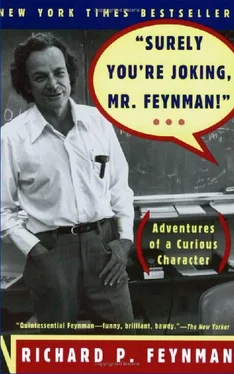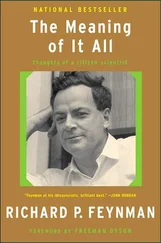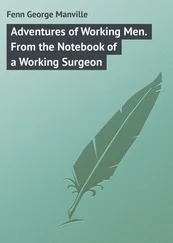There were three or four people—one was the janitor from the apartment house—and they played rather quiet music up in his apartment; they had no other place to play. One guy had a tambourine that they called a pandeiro, and another guy had a small guitar. I kept hearing the beat of a drum somewhere, but there was no drum! Finally I figured out that it was the tambourine, which the guy was playing in a complicated way, twisting his wrist and hitting the skin with his thumb. I found that interesting, and learned how to play the pandeiro, more or less.
Then the season for Carnaval began to come around. That’s the season when new music is presented. They don’t put out new music and records all the time; they put them all out during Carnaval time, and it’s very exciting.
It turned out that the janitor was the composer for a small samba “school”—not a school in the sense of education, but in the sense of fish—from Copacabana Beach, called Farçantes de Copacabana, which means “Fakers from Copacabana,” which was just right for me, and he invited me to be in it.
Now this samba school was a thing where guys from the favelas —the poor sections of the city—would come down, and meet behind a construction lot where some apartment houses were being built, and practice the new music for the Carnaval.
I chose to play a thing called a “frigideira,” which is a toy frying pan made of metal, about six inches in diameter, with a little metal stick to beat it with. It’s an accompanying instrument which makes a tinkly, rapid noise that goes with the main samba music and rhythm and fills it out. So I tried to play this thing and everything was going all right. We were practicing, the music was roaring along and we were going like sixty, when all of a sudden the head of the batteria section, a great big black man, yelled out, “STOP! Hold it, hold it—wait a minute!” And everybody stopped. “Something’s wrong with the frigideiras! ” he boomed out. “o Americano, outra vez!” (“The American again!”)
So I felt uncomfortable. I practiced all the time. I’d walk along the beach holding two sticks that I had picked up, getting the twisty motion of the wrists, practicing, practicing, practicing. I kept working on it, but I always felt inferior, that I was some kind of trouble, and wasn’t really up to it.
Well, it was getting closer to Carnaval time, and one evening there was a conversation between the leader of the band and another guy, and then the leader started coming around, picking people out: “You!” he said to a trumpeter. “You!” he said to a singer. “You!”—and he pointed to me. I figured we were finished. He said, “Go out in front!”
We went out to the front of the construction site—the five or six of us—and there was an old Cadillac convertible, with its top down. “Get in!” the leader said.
There wasn’t enough room for us all, so some of us had to sit up on the back. I said to the guy next to me, “What’s he doing—is he putting us out?”
“Nao sé, năo sé.” (“I don’t know.”)
We drove off way up high on a road which ended near the edge of a cliff overlooking the sea. The car stopped and the leader said, “Get out!”—and they walked us right up to the edge of the cliff!
And sure enough, he said, “Now line up! You first, you next, you next! Start playing! Now march!”
We would have marched off the edge of the cliff—except for a steep trail that went down. So our little group goes down the trail—the trumpet, the singer, the guitar, the pandeiro, and the frigideira —to an outdoor party in the woods. We weren’t picked out because the leader wanted to get rid of us; he was sending us to this private party that wanted some samba music! And afterwards he collected money to pay for some costumes for our band.
After that I felt a little better, because I realized that when he picked the frigideira player, he picked me!
Another thing happened to increase my confidence. Some time later, a guy came from another samba school, in Leblon, a beach further on. He wanted to join our school.
The boss said, “Where’re you from?”
“Leblon.”
“What do you play?”
“Frigideira.”
“OK. Let me hear you play the frigideira.”
So this guy picked up his frigideira and his metal stick and … “brrra-dup-dup; chick-a-chick.” Gee whiz! It was wonderful!
The boss said to him, “You go over there and stand next to O Americano, and you’ll learn how to play the frigideira! ”
My theory is that it’s like a person who speaks French who comes to America. At first they’re making all kinds of mistakes, and you can hardly understand them. Then they keep on practicing until they speak rather well, and you find there’s a delightful twist to their way of speaking—their accent is rather nice, and you love to listen to it. So I must have had some sort of accent playing the frigideira, because I couldn’t compete with those guys who had been playing it all their lives; it must have been some kind of dumb accent. But whatever it was, I became a rather successful frigideira player.
One day, shortly before Carnaval time, the leader of the samba school said, “OK, we’re going to practice marching in the street.”
We all went out from the construction site to the street, and it was full of traffic. The streets of Copacabana were always a big mess. Believe it or not, there was a trolley line in which the trolley cars went one way, and the automobiles went the other way. Here it was rush hour in Copacabana, and we were going to march down the middle of Avenida Atlantica.
I said to myself, “Jesus! The boss didn’t get a license, he didn’t OK it with the police, he didn’t do anything. He’s decided we’re just going to go out.”
So we started to go out into the street, and everybody, all around, was excited. Some volunteers from a group of bystanders took a rope and formed a big square around our band, so the pedestrians wouldn’t walk through our lines. People started to lean out of the windows. Everybody wanted to hear the new samba music. It was very exciting!
As soon as we started to march, I saw a policeman, way down at the other end of the road. He looked, saw what was happening, and started diverting traffic! Everything was informal. Nobody made any arrangements, but it worked fine. The people were holding the ropes around us, the policeman was diverting the traffic, the pedestrians were crowded and the traffic was jammed, but we were going along great! We walked down the street, around the corners, and all over the damn Copacabana, at random!
Finally we ended up in a little square in front of the apartment where the boss’s mother lived. We stood there in this place, playing, and the guy’s mother, and aunt, and so on, came down. They had aprons on; they had been working in the kitchen, and you could see their excitement—they were almost crying. It was really nice to do that human stuff. And all the people leaning out of the windows—that was terrific! And I remembered the time I had been in Brazil before, and had seen one of these samba bands—how I loved the music and nearly went crazy over it—and now I was in it!
By the way, when we were marching around the streets of Copacabana that day, I saw in a group on the sidewalk two young ladies from the embassy. Next week I got a note from the embassy saying, “It’s a great thing you are doing, yak, yak, yak …” as if my purpose was to improve relations between the United States and Brazil! So it was a “great” thing I was doing.
Well, in order to go to these rehearsals, I didn’t want to go dressed in my regular clothes that I wore to the university. The people in the band were very poor, and had only old, tattered clothes. So I put on an old undershirt, some old pants, and so forth, so I wouldn’t look too peculiar. But then I couldn’t walk out of my luxury hotel on Avenida Atlantica in Copacabana Beach through the lobby. So I always took the elevator down to the bottom and went out through the basement.
Читать дальше












